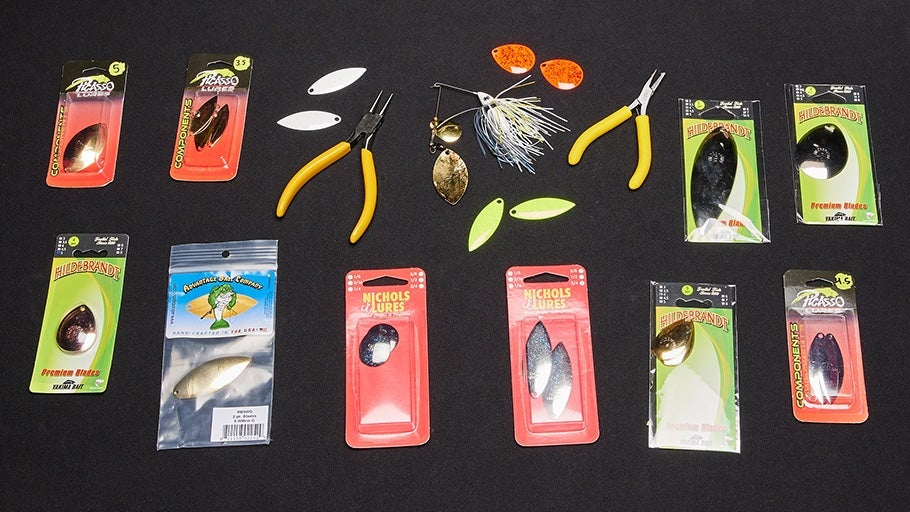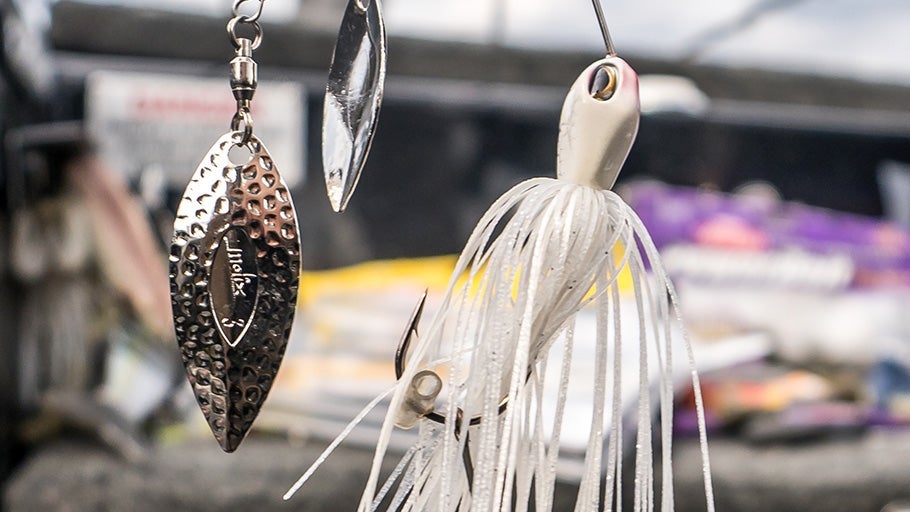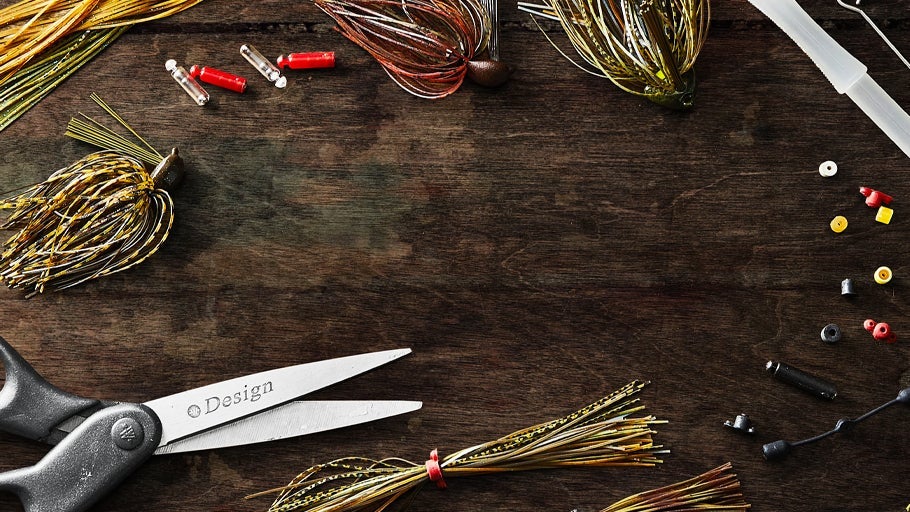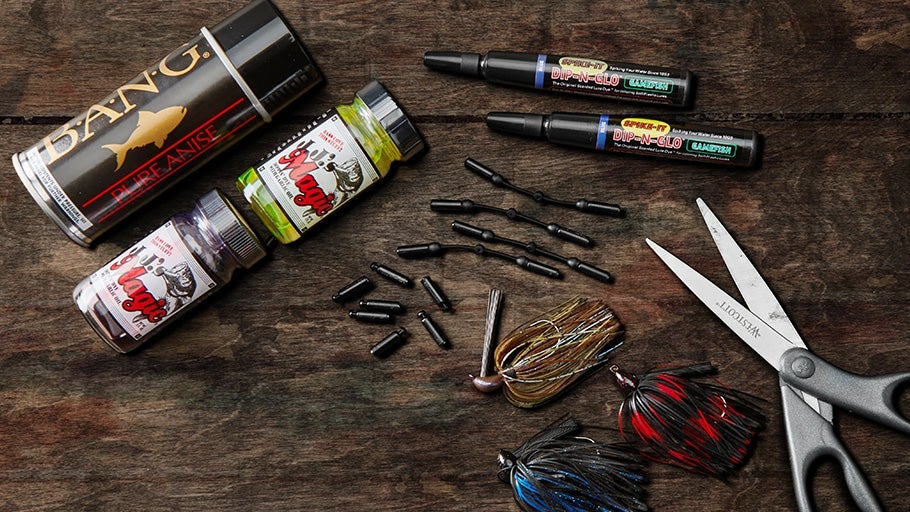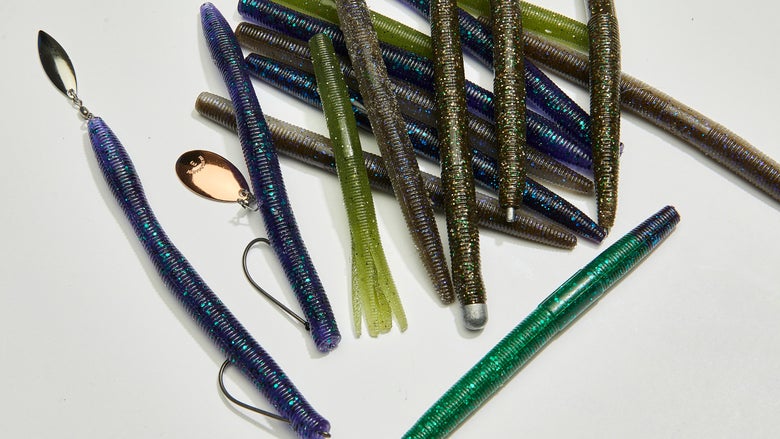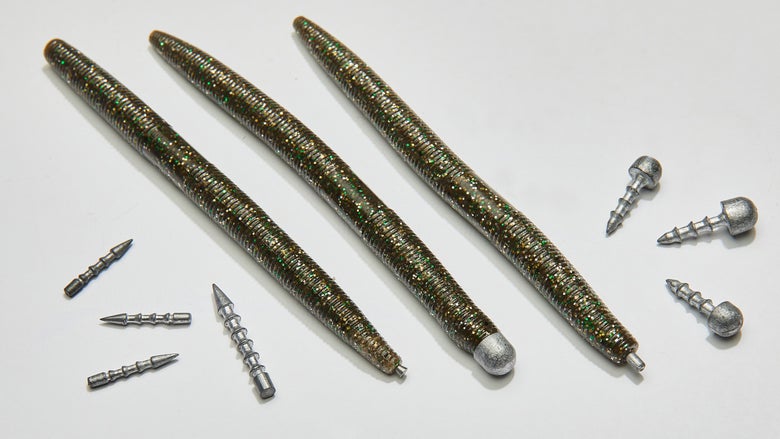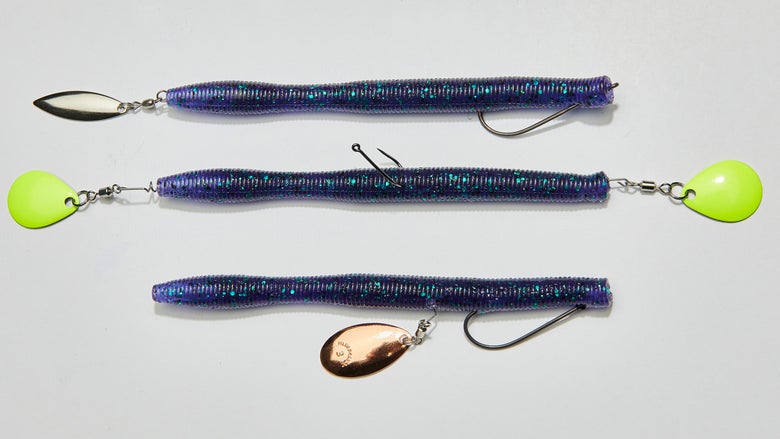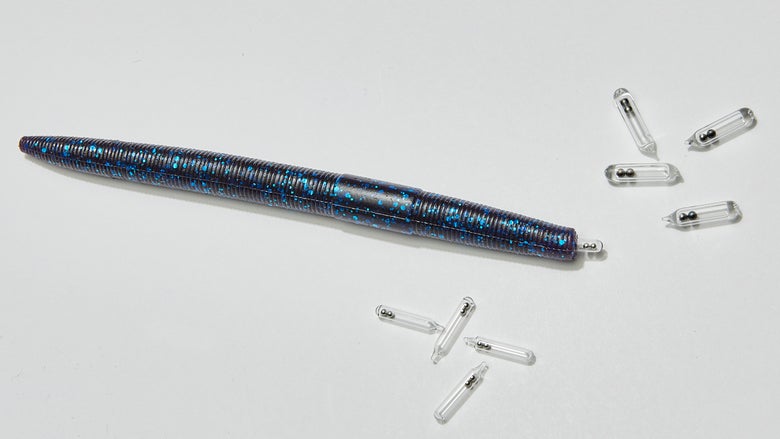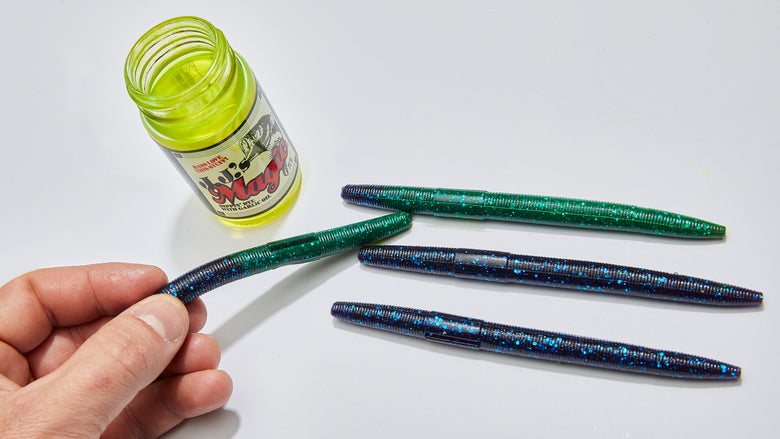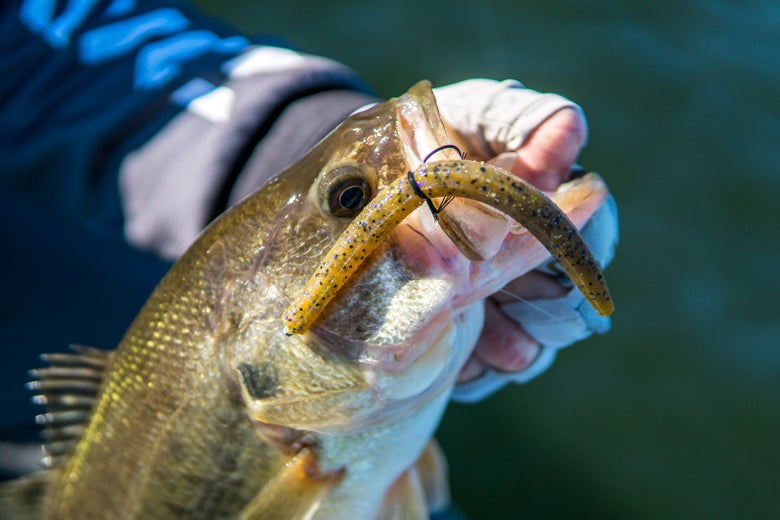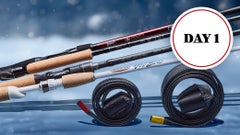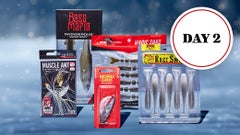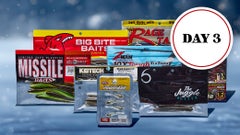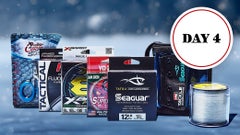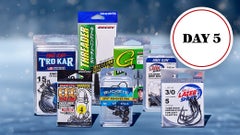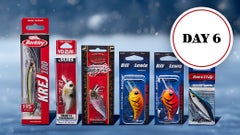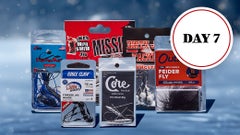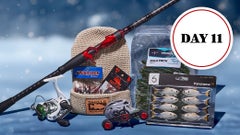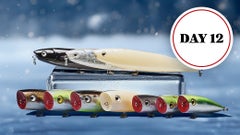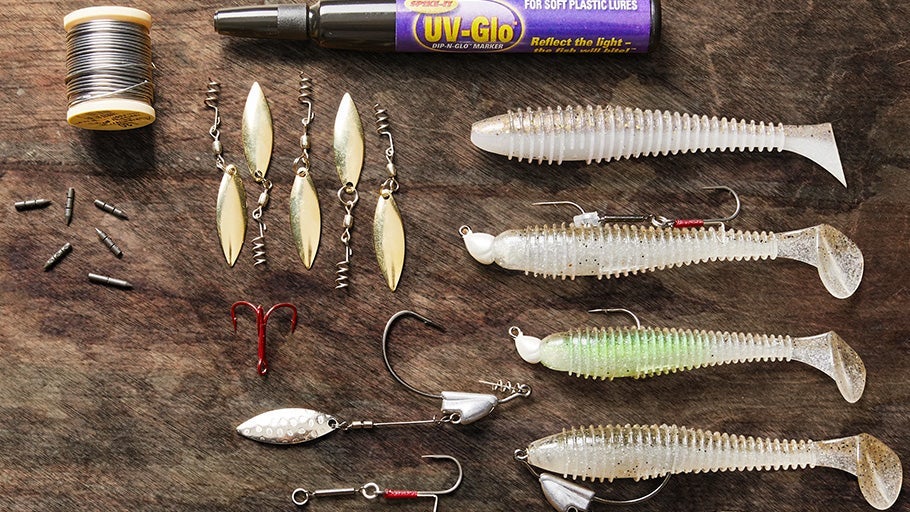
Top Soft Stick Bait Modifications
It’s hard to think of a single bait that has been more productive in the bass fishing world over the years than the soft stick bait. From conception to present day, they are responsible for keeping rods bent and line peeling off of spools - even when conditions are less than ideal. The market is brimming with various worm-imitating options, and bass have seen nearly all of them, so it can be important to set yours apart from the rest in order to generate a feeding response. Whether you’re a tournament angler trying to cash a check or a weekend warrior just looking for some extra bites, this article will show you several stick bait modifications that can sometimes be the difference between a crowded livewell and going home with the smell of skunk in the boat.
One: Create Tentacles
One easy way to give your worm a whole new look is by creating tentacles in the tail section. This basic modification adds an abundance of action and completely changes your bait’s profile. Simply use scissors or a blade to cut an inch or two of the stick bait’s tail into quarters as evenly as possible to create a quartet of appendages. Alternatively, if your target fishery contains an abundance of crawfish, it can be helpful to only split the tail in two in order to more closely imitate a set of crawfish pinchers.
Two: Break Up Salt Content
While not applicable for every worm, one of the simplest ways to enhance your salt-laden stick bait’s performance is by breaking up its salt content through the application of friction. This can be accomplished by rubbing your worm thoroughly between your thumb and forefinger or by rolling it on a table, boat deck, or similar surface. This modification will make a salt-impregnated worm softer, increase its action, and alter the color to give it a more natural, matte appearance. Loosening and releasing some of the worm’s salt will also boost its buoyancy which can be a powerful advantage for many bottom fishing techniques.
Three: Add Weight
Offering the ability to change the rate or angle of your worm’s fall, adding a nail weight to the head or tail of your preferred soft plastic stick bait can be just the subtle change needed to turn a looker into a biter. When it comes to adding weight to a soft stick bait, there's more than one way to get the job done. If you are targeting fish throughout the water column, adding a small nail weight to the head or tail of the worm can change the orientation of the worm as it falls. It will also speed up its descent, forcing fish to commit or miss out on an easy meal. If you're fishing a Texas-rigged worm, upping the gauge of your hook can also have a similar effect on the worm's sink rate. If you're targeting fish on the bottom, adding a heavier weight to create a Neko rig, or using a wacky head jig can work wonders for tempting bass hugging tight to the lake floor.
Four: Add a Blade
Willow, Colorado, or Indiana - adding your favorite style of blade to the tail or belly of your stick bait can be a successful way to grab the attention of bass in your water with some flash and thumping vibration. When navigating pressured waterways where bass have likely seen hundreds of nearly identical worms wriggle by, differentiating your offering with a blade can inspire an otherwise lockjawed predator to lash out. Additionally, the blade’s commotion and visual stimulation will help enable bass to locate your offering in stained water, low light conditions, or areas of vegetative cover.
Five: Add a Rattle
Another creative method to help hunting bass find your lure, integrating a glass rattle into your worm’s body adds an acoustic element to your presentation that calls out to predators like a dinner bell! Adding a rattle to your stick bait is as simple as pressing the pointed tip into the soft plastic material and inserting it fully. Some anglers will even seal the hole created by the insertion process by applying a heat source, such as a lighter, to the plastic and melting it closed. This helps prevent your rattle from ejecting free when you cast. Try this modification when low visibility conditions make it challenging for bass to notice your worm.
Please note: Not all soft plastics respond to exposure to direct flame the same, use caution when melting soft plastics with a heat source.
Six: Apply Dye
Like a beacon in dirty water, applying dye to your worms can help incorporate a visual aid for bass hunting in waters that offer limited visibility. Available in dips, sprays, and markers, worm dyes not only enhance your soft plastics visually, but many of them also expand your strike zone with a potent scent field as well. From brightening up a bait with chartreuse, to better matching local forage with browns or blacks, dyes are offered in a wide array of colors to help improve your success in various conditions.
Some anglers take a creative approach and mix different colored worms together in a single package to make a unique color blend. For example, by putting a few purple worms in a bag of light, shad-patterned worms, the purple will bleed into the lighter-colored worms and achieve a one-of-a-kind look. Rather than mixing fresh worms, try cutting up and sprinkling in worms that have been torn up by fish catches to extend their usefulness and stretch your budget like a pro!
Please note: Not all soft plastics respond to dyes or mixing together the same. Use caution as some dye products dissolve certain soft plastics such as ElazTech. Use caution mixing different types of soft plastic as some ElazTech plastics will melt when mixed.
As productive now as it was when it first hit the water, the Soft Stick Bait is responsible for countless catches and some scale-busting personal bests along the way. While there is no questioning their effectiveness, stick baits can sometimes suffer from getting lost in the crowd of plastic worms paraded in front of bass on a weekly or even daily basis. The next time you find your worm bites coming too few and far between, try one of these crafty modifications to turn a slow day on the water into a feeding frenzy!
Related Articles

